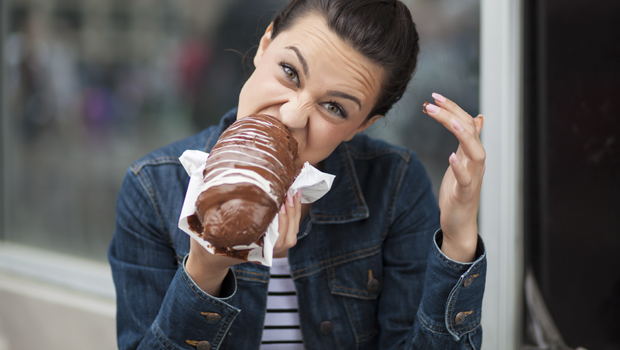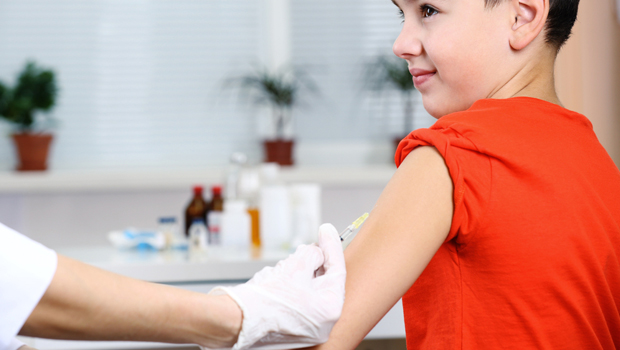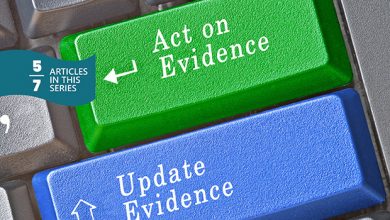The Pitfalls of Public Lows

In Laura Kronen’s new book, Too Sweet, the not-so-serious side to diabetes, she comes to terms with a Type 1 diagnosis while keeping a sense of humor. In this excerpt, she runs down 10 common experiences that people with Type 1 diabetes might recognize in their own lives.
Hypoglycemia can be fierce and unrelenting, and lows never come at a convenient time. Treating a low at home is one thing, but sometimes they can strike when you’re out in public. It’s important do what you need to bring your blood sugar levels up, and worry about embarrassment or hurt feelings later.
Here are two memorable public lows I’ve had:
The Godiva Incident
It was Christmas in New York City, a great excuse for the city to dress up in its finery. I was window-shopping on Madison Avenue when my glucose levels took a nasty turn for the teens. And I had nothing in my handbag to combat the crash.
Everywhere I turned I saw nothing but high-end designer retail boutiques. Normally, that would be my description of heaven, but at that moment I started to panic. There wasn’t even a pretzel stand nearby where I could grab a quick soda.
As I was sweating profusely and running in slow motion on the crowded sidewalk, desperately looking for something to eat or drink to raise my blood glucose, I spotted a Godiva Chocolate boutique. I propelled myself through the door and pushed ahead of an absurdly long line of people buying candy gifts.
I pleaded with the guy behind the counter. “Give me anything! Just give me something. Chocolate. Please. Now.”
He stared at me as though I had two rhinestone rainbow horns sticking out of the top of my head, but I think he quickly caught on that this was some sort of emergency…either that or I was robbing the place. Regardless, he quickly started handing over truffles, caramels, chocolate-dipped pretzels. I think I swallowed them whole.
It took a while for my levels to get back to normal, but when I was finally able to put together a sentence, I thanked the lifesaver who fueled me with chocolate and gave him a pithy explanation for my erratic behavior. That also seemed to pacify all the testy people in line.
That very same scenario (sans a Godiva boutique) has repeated itself many times in my life. None has been quite as melodramatic as that particular occasion—until the Master Disaster.
The Master Disaster
My first-ever public speaking event was an informational lecture at Columbia University on the topic of public relations. I am normally not a very nervous speaker, so it struck me as strange that I felt so jittery that day before going onstage. I had checked my blood glucose before going out, and the meter said 120. Perfect.
I was formally introduced, strolled onstage, and started my dog-and-pony show. I think I said the first few sentences clearly and distinctly, but then I lost my train of thought and immediately turned into a colossal, garbled, hot mess. Before I knew what was happening, the words “I’ll be right back” came hurrying from my mouth as I hightailed it offstage. It was like a nightmare come true.
In a flash I checked my blood sugar, and my very bizarre behavior was explained—a lovely low of 35. There was no time for humiliation; I had to act swiftly. I bolted to my handbag, consumed as many SweeTarts as I could, and waited until I stopped seeing spots and started seeing levels above 90.
Amid some whispering from the crowd, I ultimately made my way back onstage again. Instead of keeping my tail between my legs, I told the crowd I was diabetic and was under the attack of some overeager insulin. I cracked some more jokes at my expense and carried on.
It was the diabetic person’s equivalent of being naked in front of a crowd. Public speaking is much easier for me now.
You can purchase Too Sweet at Amazon.com.
Thanks for reading this Insulin Nation article. Want more Type 1 news? Subscribe here.
Have Type 2 diabetes or know someone who does? Try Type 2 Nation, our sister publication.







